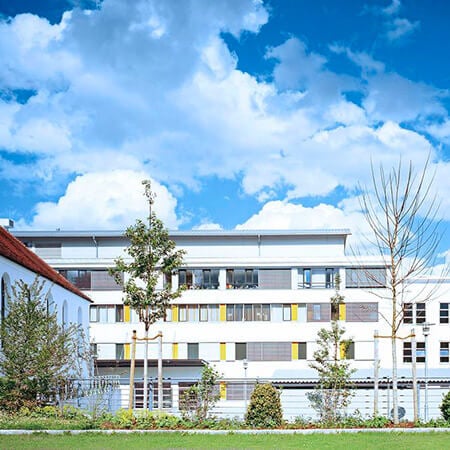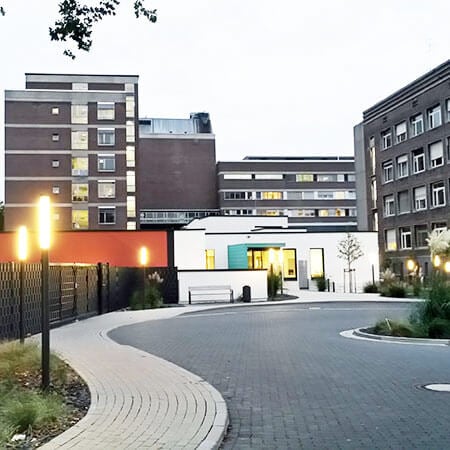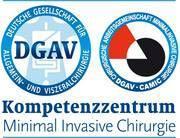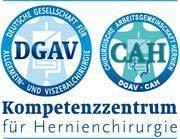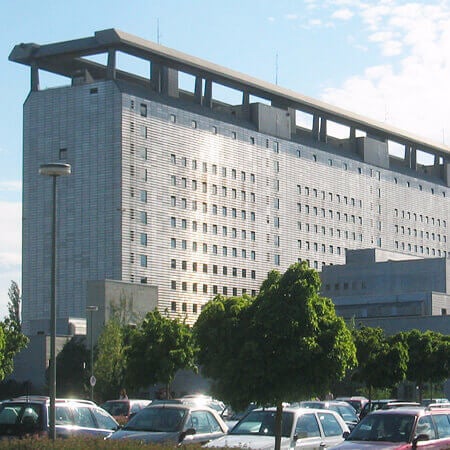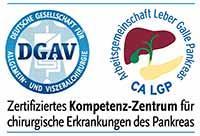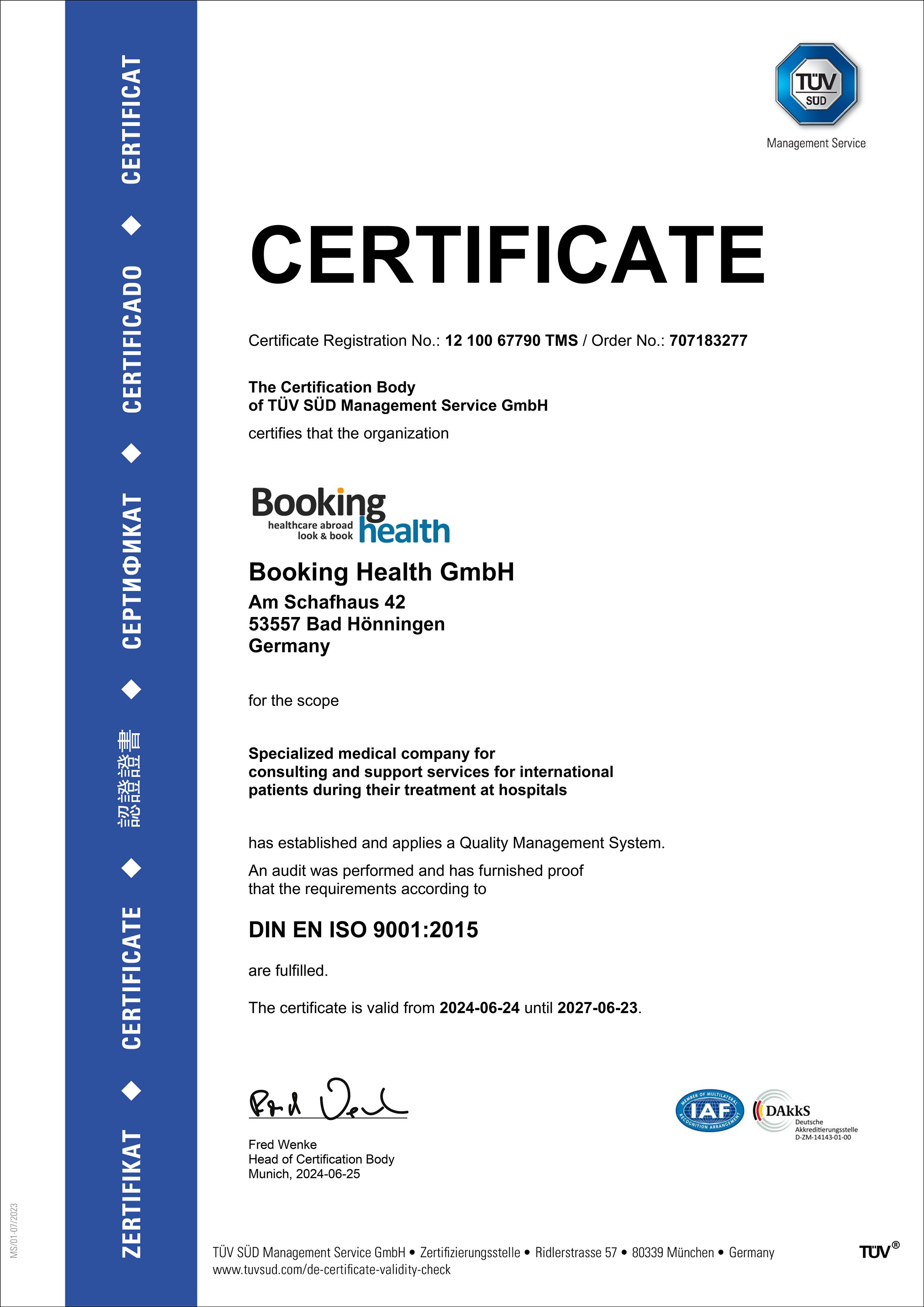Acute cholecystitis is a pathology that develops against the background of gallstone disease. The stone blocks the neck of the bladder or cystic duct. As a result, the pressure rises, the organ wall stretches, and bile stagnates and becomes infected. The pathology begins with acute pain. Late diagnosis and poor-quality treatment may lead to severe, potentially fatal complications such as gallbladder empyema, gangrene, perforation, peritonitis. Medical specialists abroad perform minimally invasive surgical interventions for cholecystitis treatment. These are laparoscopic and robot-assisted interventions. After these operations, patients recover quickly and rarely suffer from complications.
Content
- Conservative therapy
- Surgical treatment
- Treatment of chronic cholecystitis in adults
- Where to undergo treatment
Conservative therapy
If there are no signs of peritonitis, treatment of cholecystitis begins with conservative therapy. Patients receive pain killers, antispasmodics, antibiotics, and infusion therapy (droppers) to reduce intoxication. The effect is achieved in half of the patients. In the rest, the symptoms continue to progress or the disease takes on a protracted course.
The results of conservative treatment of acute gallbladder infections are assessed after 6 hours. If there is no improvement, surgery is performed.
In case of severe pathology, therapy takes place in the intensive care unit. Doctors monitor the patient's main hemodynamic parameters such as cardiac output, diuresis, and blood pressure.
Surgical treatment
In the acute form of pathology, surgical treatment of cholecystitis is carried out within 3 days after the onset of the first symptoms. If the disease is complicated by peritonitis (inflammation has extended to the peritoneum), then the operation is performed within 3 hours. This time is spent on presurgical preparation.
It has been proven that the operation performed during the first 3 days has the following benefits:
- Lower risk of complications.
- Less lethality.
- Rapid intervention and lack of technical difficulties.
- Accelerated rehabilitation.
Cholecystectomy (removal of the gallbladder) is the main treatment option for the disease. It can be performed via open (through a large incision) or laparoscopic access (through several short incisions). The second option is better, as it provides less trauma, a lower risk of complications, and patients recover quickly.
Sometimes surgical treatment can be carried out in two stages:
The first operation is decompression and drainage of the gallbladder to remove the inflammatory contents. Instead of permanent drainage, doctors may use repeated punctures to drain the pus.
The second operation is the removal of the gallbladder. It is performed in the "cold" period, namely after the elimination of the inflammatory process. As a rule, the second stage involves performing an open intervention. In Europe, minilaparotomy is preferred. The operation is performed from a smaller incision, and therefore surgeons can reduce blood loss and provide a better aesthetic result.
In case of destructive (severe) cholecystitis, concomitant cholangitis (inflammation of the bile duct) and large stones in the bile ducts, additional manipulations may be required to eliminate obstructive jaundice. The bile ducts are closed, so bile enters the bloodstream. It is necessary to direct its outflow into the intestines or into the external environment. In such cases, doctors use percutaneous drainage of the common bile duct or endoscopic retrograde cholangiopancreatography with papillosphincterotomy.
Treatment of chronic cholecystitis in adults
Chronic cholecystitis is usually a type of gallstone disease with inflammation of the gallbladder. The inflammation occurs very rarely without stones.
The mainstay of treatment is cholecystectomy. An exacerbation of chronic cholecystitis is essentially biliary colic. This condition occurs when a stone blocks the bile ducts. Acute cholecystitis develops due to biliary colic with a probability of 10%.
Where to undergo treatment
To benefit from the highest level of medical care, you can undergo gallbladder inflammation treatment abroad. The specialists of the Booking Health company will select the best hospitals for the treatment of chronic cholecystitis abroad for you and take care of the organization of your trip.
There are several reasons for you to undergo treatment of acute and chronic cholecystitis abroad:
- Accurate diagnosis of cholecystitis. Doctors quickly distinguish this pathology from diseases of other organs, and also differentiate biliary colic from acute cholecystitis.
- The disease is treated abroad with conservative therapy, if possible. Surgery is avoided in about half of the patients.
- If the help of surgeons is needed, the preference is always given to minimally invasive treatment, namely, laparoscopic cholecystectomy.
- The gallbladder can be removed laparoscopically even in gangrenous cholecystitis and in patients over 65 years of age.
- Some hospitals use robot-assisted technology for laparoscopic cholecystectomy, which is an even safer operation.
- Vast experience: the world's first laparoscopic cholecystectomy was performed in Germany in 1985. Thus, the operation in this country has been performed for more than 35 years, and the methodology for its performance is being constantly improved.
- Successful treatment of even severe and complicated forms of acute cholecystitis with the development of peritonitis and septic shock.
- Successful surgical treatment of cholecystitis in pregnant women.
- In severe cases, complex hybrid operations are used from transabdominal (through the abdomen) and oral approaches (through the mouth): cholecystectomy and papillosphincterotomy.
Please leave your request on the Booking Health website. Our specialist will contact you within just a few hours. If you book a medical care program via our service, the cost of the operation will be lower due to the lack of additional coefficients for foreign patients. You can compare the cost of treatment in different hospitals in order to book your treatment at the best price.
Authors:
The article was edited by medical experts, board-certified doctors Dr. Nadezhda Ivanisova and Dr. Sergey Pashchenko. For the treatment of the conditions referred to in the article, you must consult a doctor; the information in the article is not intended for self-medication!
Sources:
Centers for Disease Control and Prevention
Medical News Today
The Lancet
